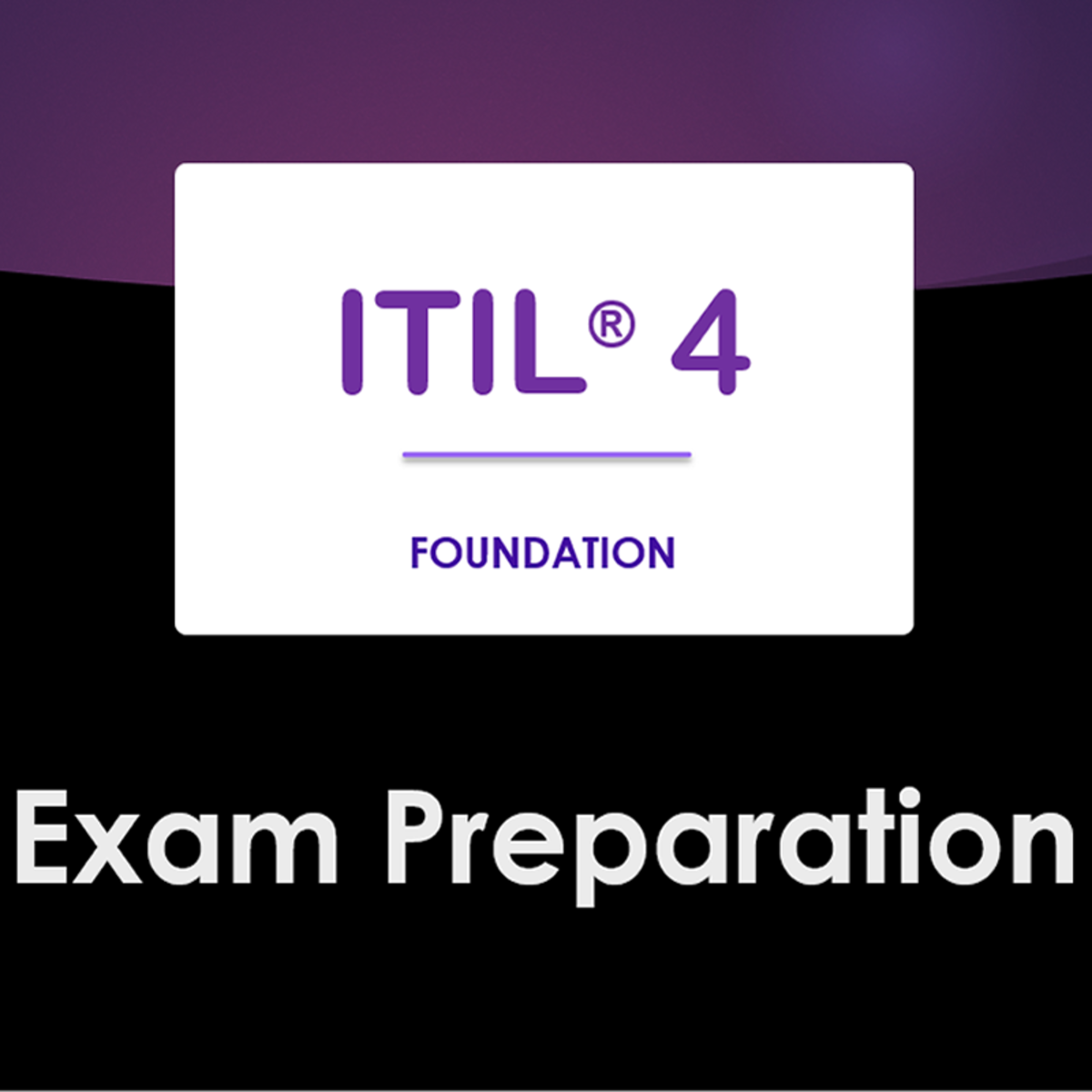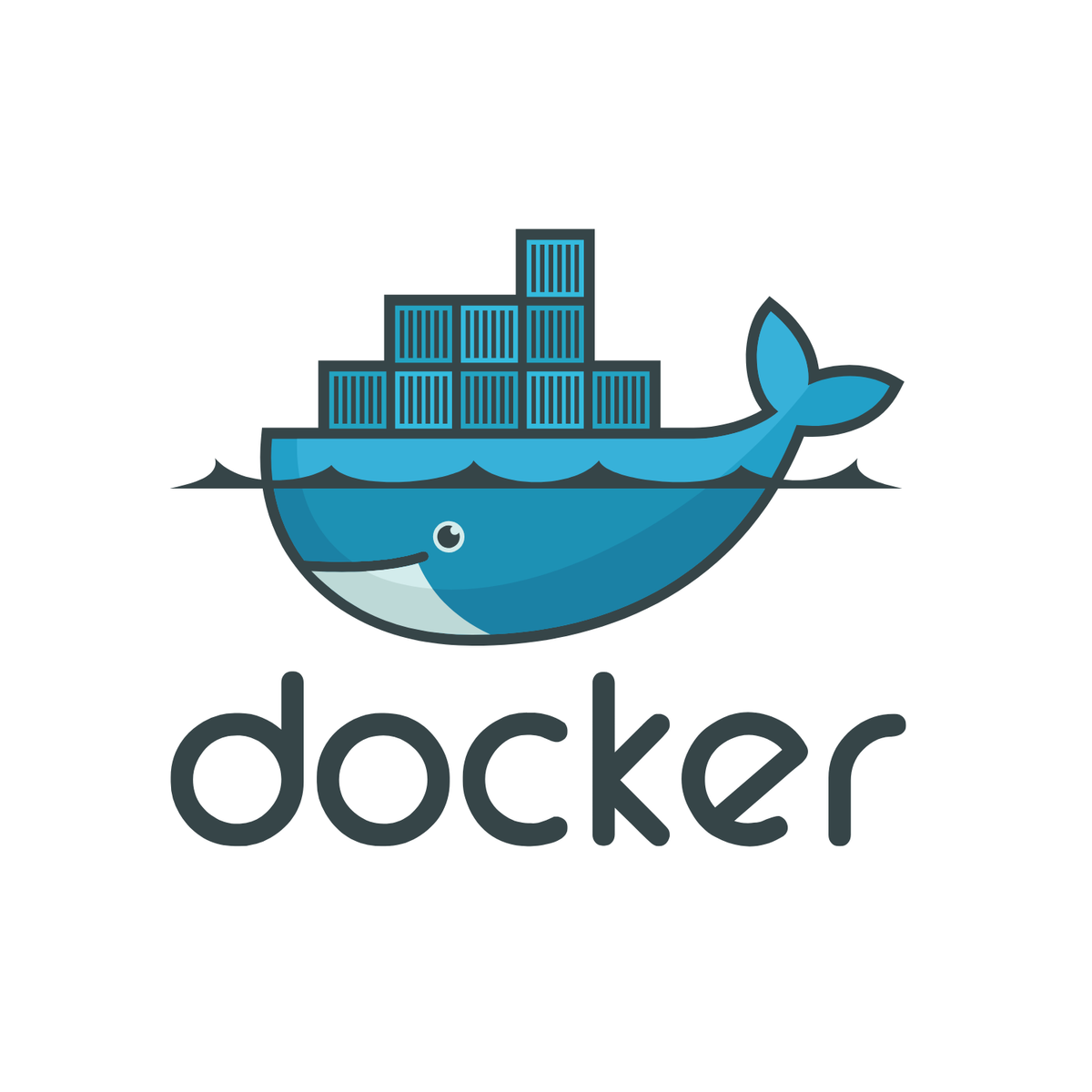IT Architect
The IT Architect Career Path: Designing the Digital Future
An Information Technology (IT) Architect is a senior professional responsible for designing and overseeing the implementation of computer systems and networks within an organization. They create the high-level blueprints that guide the development and maintenance of IT infrastructure, ensuring systems are efficient, scalable, secure, and aligned with business objectives. Think of them as the master planners for an organization's technological landscape.
Working as an IT Architect involves tackling complex technical challenges and translating business needs into robust technology solutions. It offers the opportunity to influence an organization's technological direction significantly. This role often involves collaborating with diverse teams, staying abreast of cutting-edge technologies, and making critical decisions that impact efficiency and innovation.
Introduction to IT Architect
What is an IT Architect?
At its core, an IT Architect designs the structure of IT systems. This involves understanding the organization's goals and constraints, selecting appropriate technologies, defining standards, and creating models that describe how different system components interact. Their primary purpose is to ensure the technology infrastructure effectively supports the business's current needs and future growth.
This role demands a blend of deep technical knowledge and strong strategic thinking. Architects evaluate various hardware, software, and networking options, considering factors like cost, performance, security, and maintainability. They produce documentation, diagrams, and guidelines that technical teams use to build, deploy, and manage systems.
Ultimately, an IT Architect bridges the gap between technical implementation and business strategy. They ensure that technology investments deliver real value and contribute to the organization's overall success by creating cohesive, resilient, and forward-looking IT environments.
The Evolution of IT Architecture
The role of the IT Architect emerged as computer systems grew in complexity. Early systems required careful planning, but the rise of distributed computing, the internet, client-server models, and enterprise resource planning (ERP) systems in the late 20th century demanded more formal architectural roles. Architects were needed to manage the increasing scale and integration challenges.
The advent of service-oriented architecture (SOA), virtualization, and later, cloud computing, further transformed the role. Architects now focus heavily on designing for scalability, resilience, and cost-efficiency in cloud environments (public, private, hybrid). Microservices architecture introduced new patterns for building and deploying applications, requiring architects to design for distributed systems.
Today, trends like Big Data, Artificial Intelligence (AI), the Internet of Things (IoT), and edge computing continue to shape the discipline. IT Architects must constantly adapt, learning new technologies and architectural patterns to design systems that can handle vast amounts of data, support intelligent automation, and operate effectively in increasingly decentralized environments.
Where Do IT Architects Work?
IT Architects are essential in nearly every industry that relies heavily on technology. Large enterprises across finance, healthcare, telecommunications, retail, and manufacturing employ architects to manage their complex IT estates. These sectors often have significant compliance, security, and scalability requirements that demand sophisticated architectural planning.
Technology companies, including software vendors, cloud providers, and IT consulting firms, are major employers of IT Architects. In these environments, architects might design products, develop reference architectures for customers, or provide expert consulting services. Their insights help shape the technological offerings and solutions used by other industries.
Government agencies, educational institutions, and large non-profit organizations also require IT Architects to design and manage their infrastructure. The need to integrate diverse systems, ensure security, manage budgets effectively, and support specific mission objectives makes architectural expertise crucial in these sectors as well.
IT Architect vs. Related Roles
While related, the IT Architect role differs significantly from others in the tech field. A Software Engineer, for example, typically focuses on designing, developing, and testing specific software applications or components. While they make design decisions, their scope is usually narrower than an architect's, centered on code-level implementation within a defined system boundary.
A Systems Analyst often focuses on understanding business requirements and translating them into functional specifications for IT systems. They bridge the gap between business users and technical teams but may not be responsible for the high-level technical design or technology selection, which falls under the architect's purview.
A DevOps Engineer concentrates on automating and streamlining the software development lifecycle, including build, testing, deployment, and infrastructure management. While they work closely with infrastructure, their focus is more on the processes and tools that enable continuous delivery, whereas an architect designs the underlying structure the DevOps practices operate upon.
An IT Architect operates at a higher level of abstraction, focusing on the overall structure, technology choices, and strategic alignment of IT systems across the enterprise or a significant solution area. They create the framework within which engineers, analysts, and DevOps professionals operate.
What Does an IT Architect Do?
Daily Responsibilities and Tasks
An IT Architect's day is often a mix of strategic planning, technical design, and collaboration. They might spend time researching new technologies, evaluating their suitability for upcoming projects, or analyzing the performance and security of existing systems. Much of their work involves creating detailed architectural diagrams, specifications, and documentation.
Meetings are a significant part of the role. Architects collaborate with business stakeholders to understand requirements, work with development teams to guide implementation, present designs to leadership for approval, and coordinate with operations teams on deployment and maintenance strategies. Problem-solving is also key, whether troubleshooting design flaws or finding solutions to unexpected technical hurdles.
Deliverables typically include architecture blueprints, technology standards, decision logs, risk assessments, and presentations. They are responsible for ensuring the technical vision is clearly communicated and understood by everyone involved in building and running the systems.
Designing Systems and Infrastructure
A core function of an IT Architect is designing the structure of IT solutions, ranging from individual applications to entire enterprise systems. This involves defining components, their interfaces, and how they interact. They select appropriate technologies (e.g., databases, messaging queues, servers, cloud services) based on requirements like performance, scalability, and security.
Architects establish standards and patterns to ensure consistency and quality across projects. This might involve defining coding standards, integration patterns, or security protocols. They must consider the entire lifecycle of the system, including deployment, monitoring, maintenance, and eventual decommissioning.
At the enterprise level, architects focus on the overall IT landscape, ensuring different systems work together cohesively. They develop roadmaps for technology adoption and modernization, aiming to reduce complexity, improve efficiency, and align the IT infrastructure with the long-term goals of the business.
This course offers insights into managing IT investments strategically.
Understanding the principles of designing complex systems is crucial.
Collaboration Across Teams
IT Architects rarely work in isolation. Effective collaboration is crucial for success. They must work closely with business analysts and product managers to ensure technical solutions accurately address business needs. Understanding the 'why' behind a requirement is as important as figuring out the 'how'.
Interaction with software developers and engineers is constant. Architects provide guidance, review designs, answer technical questions, and ensure implementations adhere to the architectural vision. They need to communicate complex technical concepts clearly and foster a collaborative environment.
Architects also interface with project managers regarding timelines and resources, security teams to ensure compliance and risk mitigation, and operations teams to plan for deployment, monitoring, and support. Engaging with senior leadership to explain technical strategies and justify technology investments is another key aspect of their collaborative role.
This course provides techniques for customer-focused IT strategy.
Balancing Technical Needs and Business Goals
A critical challenge for IT Architects is balancing purely technical considerations with broader business objectives. While they strive for elegant, robust, and technically advanced solutions, these must also be cost-effective, delivered within reasonable timelines, and aligned with the organization's strategic priorities.
This often involves making trade-offs. For instance, using the latest cutting-edge technology might be technically exciting but could introduce risks or costs that the business cannot justify. Conversely, sticking solely with older, familiar technology might hinder innovation or scalability. The architect must weigh these factors and make informed decisions.
Architects need strong business acumen to understand financial implications, market dynamics, and organizational strategy. They must be able to articulate the business value of technical decisions and advocate for architectures that provide the best overall return on investment, considering both short-term needs and long-term sustainability.
These books explore the strategic dimension of enterprise architecture.
Key Skills and Competencies
Essential Technical Skills
IT Architects require a broad and deep technical skillset. Foundational knowledge of operating systems (like Linux and Windows Server), networking principles (TCP/IP, DNS, load balancing, firewalls), and database technologies (SQL, NoSQL) is essential.
Proficiency in cloud computing platforms like AWS, Azure, and Google Cloud is increasingly critical. This includes understanding their core services (compute, storage, networking, databases), deployment models (IaaS, PaaS, SaaS), and architectural best practices for the cloud.
Understanding virtualization technologies (like VMware) and containerization (Docker, Kubernetes) is vital for designing modern, scalable infrastructure. Familiarity with infrastructure as code (IaC) tools like Terraform and configuration management tools like Ansible is also highly valuable for automation.
Cybersecurity principles, including identity management, encryption, network security, and threat modeling, are non-negotiable skills for designing secure systems.
Crucial Soft Skills
Technical expertise alone is insufficient for an IT Architect. Strong soft skills are equally important. Excellent communication skills are paramount – architects must clearly explain complex technical concepts to diverse audiences, both technical and non-technical, through presentations, documentation, and discussions.
Leadership and influence are key. Architects often guide technical teams without direct managerial authority. They need to build consensus, negotiate solutions, and persuade stakeholders to adopt their architectural vision. Problem-solving and critical thinking abilities allow them to analyze complex issues, evaluate options, and devise effective solutions.
Strategic thinking enables architects to see the bigger picture, understand business context, and design solutions that align with long-term goals. Adaptability and a continuous learning mindset are crucial for keeping pace with the rapidly evolving technology landscape.
Valuable Certifications
While experience is paramount, certifications can validate an architect's knowledge and skills, particularly in specific domains. Vendor-neutral certifications like TOGAF (The Open Group Architecture Framework) are highly respected for enterprise architecture methodologies.
Cloud platform certifications are in high demand. These include AWS Certified Solutions Architect (Associate and Professional), Microsoft Certified: Azure Solutions Architect Expert, and Google Cloud Certified - Professional Cloud Architect. These demonstrate expertise in designing solutions on specific cloud platforms.
record:six33o
Other relevant certifications might include security credentials like CISSP (Certified Information Systems Security Professional) for security-focused architects, or certifications related to specific technologies like Kubernetes (CKA/CKAD) or networking (CCNP/CCIE).
These courses help prepare for fundamental cloud certifications.
Adapting to Emerging Technologies
The technology landscape is constantly changing, and IT Architects must be lifelong learners. Staying current with emerging trends like Artificial Intelligence (AI), Machine Learning (ML), Internet of Things (IoT), edge computing, blockchain, and serverless architectures is vital.
Architects need to understand not just the capabilities of these technologies but also their implications for system design, security, cost, and operations. They must evaluate when and how to incorporate new technologies into the existing infrastructure or new solutions responsibly.
This involves reading industry publications, attending conferences, participating in online communities, experimenting with new tools, and taking courses. A proactive approach to learning ensures architects can design relevant, effective, and future-proof systems.
These courses introduce edge computing and AI concepts relevant to architecture.
Formal Education Pathways
Relevant Academic Degrees
A bachelor's degree in a relevant field is typically the minimum educational requirement for roles leading to IT architecture. Common degrees include Computer Science, Information Technology, Software Engineering, Computer Engineering, or Information Systems. These programs provide foundational knowledge in programming, algorithms, data structures, operating systems, networking, and databases.
Some architects pursue advanced degrees, such as a Master of Science (M.S.) in Computer Science or a related technical field. A master's degree can offer deeper specialization in areas like distributed systems, cybersecurity, or data science, which can be highly beneficial for an architect's career. An MBA can also be valuable for developing business acumen.
While a degree provides a strong theoretical base, practical experience is crucial. Many IT Architects start in roles like software development, system administration, or network engineering and gradually move into architecture after gaining substantial hands-on experience and demonstrating strategic thinking capabilities.
Doctoral Research in Architecture
A Doctor of Philosophy (Ph.D.) is generally not required for practitioner roles as an IT Architect in industry. However, Ph.D. programs in Computer Science or related fields offer opportunities for deep research into topics relevant to IT architecture. This path is more suited for those interested in academic research or roles in industrial research labs.
Potential Ph.D. research areas could include novel architectural frameworks, performance modeling of large-scale systems, formal methods for system verification, security architectures for emerging technologies (like IoT or quantum computing), or algorithms for automated system design and optimization.
Graduates with Ph.D.s in architecture-related areas might contribute to the field by developing new theories, tools, and methodologies that eventually influence industry practices. They might work at universities, research institutions, or advanced R&D departments within large technology companies.
Accredited Certification Programs
Beyond formal degrees, accredited certification programs play a significant role in an IT Architect's career development. As mentioned earlier, certifications from organizations like The Open Group (TOGAF) or major cloud providers (AWS, Azure, Google Cloud) are highly valued by employers.
These programs provide structured learning paths and validate specific knowledge and skills through rigorous exams. They often require demonstrating practical experience or understanding of best practices in designing, deploying, and managing complex IT systems within specific frameworks or platforms.
While not a substitute for a degree or experience, certifications signal a commitment to professional development and can be particularly useful when specializing in a specific technology domain or seeking roles that require expertise with a particular vendor's ecosystem.
This course prepares for the ITIL Foundation certification, relevant for IT service management.
University and Industry Collaborations
Many universities collaborate with technology companies to enhance their curriculum and provide students with relevant industry experience. These partnerships can take various forms, including guest lectures by industry professionals, joint research projects, internships, co-op programs, and access to specialized software or hardware.
Some universities offer specialized tracks or concentrations within their degree programs that align with industry needs, such as cloud computing, cybersecurity, or data science. These programs often incorporate industry-standard tools and certifications into their coursework.
Engaging with these opportunities can be highly beneficial for aspiring IT Architects. Internships provide invaluable hands-on experience, while industry-aligned coursework ensures students are learning skills that are directly applicable in the job market. Staying informed about such partnerships can give students an edge.
Online Learning and Skill Development
Learning IT Architecture Independently
Embarking on a career as an IT Architect often requires significant experience, but online learning provides powerful tools for building foundational knowledge and acquiring specific technical skills. For those pivoting careers or supplementing formal education, self-guided learning online is highly feasible and effective, particularly for mastering specific technologies or tools.
While becoming an architect solely through online courses is challenging due to the need for real-world experience and strategic thinking developed over time, online resources are invaluable for closing skill gaps, staying current, and preparing for certifications. Discipline and a structured approach are key to successful self-guided learning.
Starting with foundational concepts in networking, operating systems, databases, and then moving into cloud platforms and system design principles is a common path. Remember, the journey often involves years of practical application, but online learning accelerates the knowledge acquisition phase significantly.
For tips on structuring your learning and staying motivated, explore the OpenCourser Learner's Guide.
Relevant Online Course Types
A vast array of online courses cater to aspiring and practicing IT Architects. Look for courses covering core architectural concepts like system design principles, scalability patterns, and architectural trade-offs. Platforms like Coursera, edX, and others offer courses from universities and industry experts on these topics.
Courses focused on specific cloud platforms (AWS, Azure, Google Cloud) are essential. These often range from foundational introductions to deep dives into specific services and preparation for professional-level certifications. Look for courses covering compute, storage, networking, security, and database services within these ecosystems.
Specialized courses in areas like containerization (Docker, Kubernetes), infrastructure as code (Terraform, Ansible), cybersecurity, network design, database management, and DevOps practices are also highly relevant. Project-based courses that offer hands-on labs are particularly valuable for practical skill development.
This book provides excellent patterns for building reliable systems.
Building a Portfolio with Projects
Theoretical knowledge from courses needs to be complemented by practical application. Building a portfolio of personal projects is an excellent way to solidify learning, demonstrate skills to potential employers, and gain hands-on experience. This is especially important for those relying heavily on self-guided learning.
Project ideas could include: designing and deploying a scalable web application architecture on a cloud platform, setting up a CI/CD pipeline using Docker and Kubernetes, designing a secure network infrastructure for a hypothetical small business, or migrating a monolithic application to a microservices architecture.
Document your projects thoroughly, explaining the design choices, technologies used, challenges faced, and lessons learned. Include diagrams and code repositories (e.g., on GitHub) where appropriate. A well-documented portfolio showcases not just technical skills but also architectural thinking and communication abilities.
Many online courses include projects, and OpenCourser often suggests related activities on course pages to help learners apply their knowledge.
These courses offer hands-on project experience.
Integrating Online and Formal Learning
Online learning can powerfully supplement formal education pathways. University students can use online courses to gain deeper knowledge in specific areas not covered extensively in their curriculum, learn industry-standard tools, or prepare for certifications alongside their degree studies.
Professionals already working in IT can use online courses to upskill, reskill, or stay current with the latest technologies without taking significant time off work. Online learning offers flexibility to learn at one's own pace, fitting studies around existing commitments.
Combining formal education (providing theoretical foundations and credentials) with targeted online learning (for specific skills and practical application) and real-world experience creates a well-rounded profile for an aspiring IT Architect. OpenCourser makes it easy to browse IT & Networking courses and find resources that match your learning goals.
Career Progression for IT Architects
Starting Points and Foundational Roles
The IT Architect role is typically not an entry-level position. It requires a significant foundation of technical expertise and practical experience. Most architects begin their careers in more hands-on technical roles, building deep skills in specific domains over several years.
Common starting points include roles like Software Engineer, Systems Administrator, Network Engineer, Database Administrator, or DevOps Engineer. In these positions, individuals gain proficiency in programming, infrastructure management, network configuration, database optimization, or automation, respectively.
During this foundational phase, it's crucial to develop not only technical depth but also problem-solving skills, an understanding of system interactions, and effective communication. Seeking opportunities to contribute to design discussions or take on tasks with broader system impact can help pave the way towards an architecture role.
Mid-Career Transitions and Specializations
After gaining substantial experience (often 5-10 years or more), professionals may transition into architectural roles. Initial steps might involve becoming a Senior Engineer or a Team Lead, where design responsibilities increase. The first formal architect role is often a Solutions Architect.
A Solutions Architect typically focuses on designing solutions for specific business problems or projects, often within a particular technology domain (e.g., cloud, data, security). They translate requirements into technical designs and guide implementation teams.
As architects gain more experience and broader knowledge, they may specialize further (e.g., Cloud Architect, Security Architect, Data Architect) or move towards an Enterprise Architect role. Enterprise Architects have a wider scope, focusing on the overall IT strategy, standards, and roadmap for the entire organization.
This book covers concepts essential for VMware architects.
Leadership Pathways
Experienced IT Architects with strong leadership qualities and business acumen can progress into senior technology leadership positions. These roles move beyond pure technical design towards strategic oversight, team management, and budget responsibility.
Potential leadership pathways include becoming a Principal Architect (a highly respected individual contributor role focused on the most complex challenges), an Architecture Manager (leading a team of architects), an IT Director, or even a Chief Technology Officer (CTO) or Chief Information Officer (CIO) in some organizations.
Success in these roles requires not only deep technical understanding but also excellent strategic planning, financial management, communication, and people leadership skills. An MBA or executive education can be beneficial for those aspiring to these senior leadership positions.
The Impact of Certifications on Advancement
Certifications can play a role in career progression, particularly when moving into specialized architect roles or seeking positions at new companies. They serve as objective validation of skills and knowledge, especially with specific vendor platforms like AWS, Azure, or Google Cloud.
While certifications alone rarely guarantee promotion, they can make a candidate more competitive and demonstrate a commitment to continuous learning. For instance, achieving a professional-level cloud architect certification can significantly boost credibility when seeking cloud-focused roles.
However, certifications are most impactful when combined with demonstrable experience and strong performance. Employers ultimately value architects who can deliver effective, reliable, and value-driven solutions. Certifications support this by ensuring a solid understanding of best practices and platform capabilities, but hands-on success remains the primary driver of advancement.
Industry Trends Impacting IT Architects
Cloud Adoption: Hybrid and Multi-Cloud Strategies
The shift to the cloud continues to dominate the IT landscape. Increasingly, organizations are adopting hybrid cloud (mixing private and public clouds) or multi-cloud (using services from multiple public cloud providers) strategies. This trend significantly impacts IT Architects.
Architects must design solutions that can operate seamlessly across these diverse environments, considering factors like data portability, interoperability, security consistency, and cost management. Skills in containerization (Docker, Kubernetes) and cloud-native architectures become even more crucial for building portable applications.
Managing complexity and avoiding vendor lock-in are key challenges. Architects need expertise in tools and platforms that facilitate management across multiple clouds and skills in designing architectures that leverage the best services from each provider while maintaining overall coherence and governance.
This course explores considerations for deploying Google Workspace, a cloud service.
Edge Computing and IoT Integration
The proliferation of Internet of Things (IoT) devices and the need for real-time data processing are driving the growth of edge computing. Edge computing involves processing data closer to where it is generated, rather than sending it all back to a central cloud or data center.
IT Architects are tasked with designing architectures that incorporate edge devices, edge gateways, and backend cloud services. This requires understanding network constraints, device management at scale, data synchronization patterns, and security considerations specific to distributed edge environments.
Designing for resilience and managing deployments across potentially thousands of edge locations present unique challenges. Architects need to select appropriate edge platforms and design data flows that balance local processing needs with centralized analytics and control.
This course covers securing the IoT landscape.
Sustainability in IT Design (Green IT)
Environmental sustainability is becoming an increasingly important consideration in IT. Organizations are facing pressure to reduce the carbon footprint of their technology operations. This "Green IT" trend impacts architectural decisions.
IT Architects need to consider the energy efficiency of hardware, optimize resource utilization in data centers and clouds, and design applications to be less resource-intensive. This might involve selecting energy-efficient servers, leveraging serverless architectures to minimize idle resources, or optimizing data storage and transfer.
Cloud providers are increasingly offering tools and reporting on the carbon footprint of cloud usage, and architects may need to factor sustainability metrics into their designs and technology choices. Designing for longevity and reducing electronic waste are also part of this broader trend.
AI-Driven Automation and Architecture
Artificial Intelligence (AI) and Machine Learning (ML) are impacting IT architecture in two main ways. First, architects must design infrastructure capable of supporting demanding AI/ML workloads, including data pipelines, training environments, and inference engines.
Second, AI itself is being used to automate aspects of architectural planning and operations (AIOps). AI tools can help analyze system performance, predict failures, optimize resource allocation, and even suggest design improvements. Architects need to understand how to leverage these tools effectively.
This requires architects to stay informed about AI/ML technologies and platforms. While AI won't replace architects, it will likely augment their capabilities, handling more routine analysis and optimization tasks, allowing architects to focus on higher-level strategic design challenges.
Global Demand and Regional Variations
The demand for skilled IT Architects remains strong globally, driven by ongoing digital transformation initiatives across industries. According to the U.S. Bureau of Labor Statistics, employment for Computer Network Architects (a related role) is projected to grow, reflecting the broader need for architectural expertise.
However, demand can vary by region and industry. Major technology hubs and sectors like finance, healthcare, and e-commerce often show particularly high demand. Specific skill requirements might also differ based on regional technology adoption patterns (e.g., preference for certain cloud providers).
Remote work opportunities have increased the potential for global employment, but factors like time zones, language skills, and regulatory knowledge (especially regarding data privacy) can influence international roles. Staying aware of global technology trends and market demands is beneficial for architects considering international opportunities.
Challenges Faced by IT Architects
Balancing Innovation and Legacy Systems
One of the most persistent challenges for IT Architects is integrating new technologies and innovative solutions with existing legacy systems. Many organizations rely on older systems that are critical to operations but difficult and costly to replace or modernize.
Architects must find ways to introduce new capabilities without disrupting essential business functions supported by legacy infrastructure. This often involves complex integration strategies, careful migration planning, and managing technical debt – the implied cost of rework caused by choosing an easy (limited) solution now instead of using a better approach that would take longer.
Finding the right balance between maintaining stability and driving innovation requires careful assessment, strategic planning, and often, phased approaches to modernization. Architects need to be pragmatic and skilled in navigating the technical and organizational complexities involved.
Cybersecurity Threats and Risk Mitigation
The cybersecurity landscape is constantly evolving, with new threats emerging regularly. IT Architects are on the front lines of designing systems that are resilient to attacks and protect sensitive data. This requires a deep understanding of security principles and best practices.
Cybersecurity must be integrated into the architecture from the outset ("security by design"), not bolted on as an afterthought. Architects need to conduct threat modeling, implement appropriate security controls (authentication, authorization, encryption, firewalls, intrusion detection), and ensure compliance with relevant security standards and regulations.
Keeping up with evolving threats and vulnerabilities is a constant challenge. Architects must work closely with security teams, stay informed about new attack vectors, and continuously evaluate and update system defenses to mitigate risks effectively.
Managing Stakeholder Expectations
IT Architects interact with a wide range of stakeholders, including business leaders, project managers, developers, and operations teams, each with potentially different priorities and expectations. Managing these diverse expectations is a significant challenge.
Business stakeholders may desire features that are technically complex or costly, while development teams might prefer certain technologies, and operations teams prioritize stability. The architect must navigate these competing interests, communicate trade-offs clearly, and build consensus around architectural decisions.
This requires strong negotiation, diplomacy, and communication skills. Architects need to justify their design choices based on both technical merit and business value, setting realistic expectations about what can be achieved within given constraints of time, budget, and resources.
Keeping Pace with Rapid Technological Change
The pace of technological advancement in IT is relentless. New tools, platforms, frameworks, and paradigms emerge constantly. For IT Architects, staying current across this broad and rapidly changing landscape is a major challenge.
Architects must dedicate significant time to continuous learning – reading, attending training, experimenting with new technologies, and participating in industry communities. They need to evaluate new trends critically, distinguishing hype from genuine advancements that offer tangible benefits.
Failing to keep pace can lead to designing outdated or suboptimal solutions. This challenge underscores the importance of lifelong learning and adaptability as core competencies for anyone pursuing a career in IT architecture. OpenCourser provides a platform to discover relevant courses and stay updated, including finding deals on online courses to make continuous learning more affordable.
Ethical Considerations in IT Architecture
Data Privacy and Compliance
IT Architects play a critical role in ensuring systems handle personal data responsibly and comply with privacy regulations like GDPR (General Data Protection Regulation), CCPA (California Consumer Privacy Act), and HIPAA (Health Insurance Portability and Accountability Act).
Architectural decisions directly impact how data is collected, stored, processed, accessed, and secured. Architects must design systems with privacy-enhancing features, such as data minimization, encryption, access controls, and mechanisms for user consent and data deletion.
Understanding the requirements of relevant privacy laws and incorporating them into the system design from the beginning ("privacy by design") is an ethical imperative. Neglecting privacy considerations can lead to significant legal penalties, reputational damage, and loss of user trust.
This course covers data strategy and governance, including compliance aspects.
Environmental Impact of IT Systems
As discussed under trends, the environmental impact of IT infrastructure is a growing ethical concern. Data centers and digital devices consume vast amounts of energy and contribute to carbon emissions and electronic waste.
IT Architects have an ethical responsibility to consider sustainability in their designs. This involves choosing energy-efficient hardware, optimizing resource utilization through techniques like virtualization and serverless computing, designing efficient algorithms, and considering the lifecycle environmental impact of technology choices.
Promoting "Green IT" practices within their organizations and advocating for sustainable architectural patterns is becoming an increasingly important aspect of the architect's role, aligning technological progress with environmental stewardship.
Bias in AI-Driven Architectural Decisions
As AI and machine learning become more integrated into IT systems and potentially even influence architectural decisions themselves (e.g., through AIOps tools), architects must be vigilant about potential biases.
AI models can inherit biases present in their training data or algorithms, leading to unfair or discriminatory outcomes. If AI tools are used to automate resource allocation, performance tuning, or even system design choices, architects must ensure these systems are fair, transparent, and auditable.
This requires an understanding of AI ethics principles and techniques for detecting and mitigating bias. Architects have an ethical duty to ensure that the systems they design, including those incorporating AI, operate equitably and do not perpetuate harmful biases.
This course introduces responsible AI concepts.
Ethical Frameworks for System Design
Beyond specific issues like privacy or bias, architects should be guided by broader ethical frameworks when designing systems. This involves considering the potential impact of technology on individuals, society, and the environment.
Questions to consider include: Does the system promote fairness and equity? Is it accessible to people with disabilities? Is it transparent and accountable? Does it prioritize human well-being and autonomy? Does it minimize potential harm?
Applying ethical principles proactively throughout the design process helps ensure that technology serves humanity constructively. Architects, given their influence over system structure and capabilities, bear a significant responsibility in upholding these ethical standards.
Frequently Asked Questions (Career Focus)
Question: What is the typical salary range for an IT Architect?
Answer: Salary ranges for IT Architects vary significantly based on experience, location, industry, company size, and specific skills (especially cloud certifications). Generally, it's a high-paying role reflecting its seniority and required expertise. Entry-level architect roles might start around $100,000-$130,000 USD, while experienced architects, particularly Enterprise or specialized architects (Cloud, Security), can earn well over $150,000, with senior roles potentially exceeding $200,000 or more in high-cost-of-living areas or high-demand industries. Consulting roles can also command high rates. Checking resources like Robert Half's Salary Guide can provide more specific, up-to-date ranges for your region.
Question: How is the demand for IT Architects during economic downturns versus growth periods?
Answer: Demand for IT Architects generally remains relatively strong even during economic downturns, although hiring might slow down. Organizations still need to maintain and optimize their core IT infrastructure, ensure security, and plan strategically. During growth periods, demand typically surges as companies invest heavily in new technologies, digital transformation, and expansion, requiring architects to design and oversee these initiatives. Roles focused on cost optimization and efficiency might become more prominent during downturns.
Question: Is remote work common for IT Architects?
Answer: Remote work has become increasingly common for IT Architects, especially since 2020. Many aspects of the role, such as design, documentation, and virtual meetings, can be performed effectively remotely. However, feasibility depends on company culture and specific project needs; some organizations may prefer architects to be on-site periodically for collaboration or sensitive projects. Global remote opportunities exist but may require navigating time zone differences and understanding international regulations.
Question: How can someone transition from Software Development to IT Architecture?
Answer: Transitioning from Software Development involves broadening technical knowledge beyond specific applications to encompass infrastructure, networking, security, and databases. Gaining experience with system design, understanding architectural patterns, and developing cross-functional collaboration skills are crucial. Seeking opportunities to lead design efforts on projects, mentoring junior engineers, and pursuing relevant certifications (like cloud architect certs or TOGAF) can help. Emphasize developing systems thinking, business acumen, and strong communication skills alongside technical depth.
Question: Which industries have the highest demand for IT Architects?
Answer: Industries with complex IT needs and significant technology investments typically have the highest demand. These often include Finance and Banking (due to security, compliance, and large-scale transaction systems), Healthcare (driven by electronic health records, telehealth, and compliance), Technology (software companies, cloud providers), Telecommunications, large Retail/E-commerce businesses, and Government agencies.
Question: Are specific certifications essential for international IT Architect roles?
Answer: Globally recognized certifications are highly advantageous for international roles. Certifications from major cloud providers (AWS Certified Solutions Architect, Azure Solutions Architect Expert, Google Cloud Professional Cloud Architect) are widely respected worldwide. Vendor-neutral certifications like TOGAF also have international recognition. While requirements can vary by country and employer, these well-known certifications provide a common benchmark of expertise.
Becoming an IT Architect is a challenging yet rewarding journey that involves continuous learning, deep technical expertise, strategic thinking, and strong collaboration skills. It offers the chance to shape the technological foundation of organizations and drive innovation in a constantly evolving digital world.



































